
Ceiling insulation is a key requirement to increase the energy efficiency of your home and give you cheaper utility bills. There are many types of insulation available and it can be hard to know which one is best for you. Here we’ll look at some of the different kinds of ceiling insulation and their benefits.
Before we get started, a word about DIY versus professionally installed. Insulation in batt format, which comes in standard sizes and many R-Value options, are ideal for DIY installation. All other types of insulation are not suitable for DIYers.
Fibreglass Batts:
Fibreglass, also known as “glass fibre” or “glass wool” is one of the more common types of insulation used in homes. It can offer some high R-Values in a small package, making it a good option in tight roof spaces. Generally seen as being one of the more popular options by builders, mostly because it is often the cheapest form of batts available. Glass wool can be found in various densities and can suit many applications.
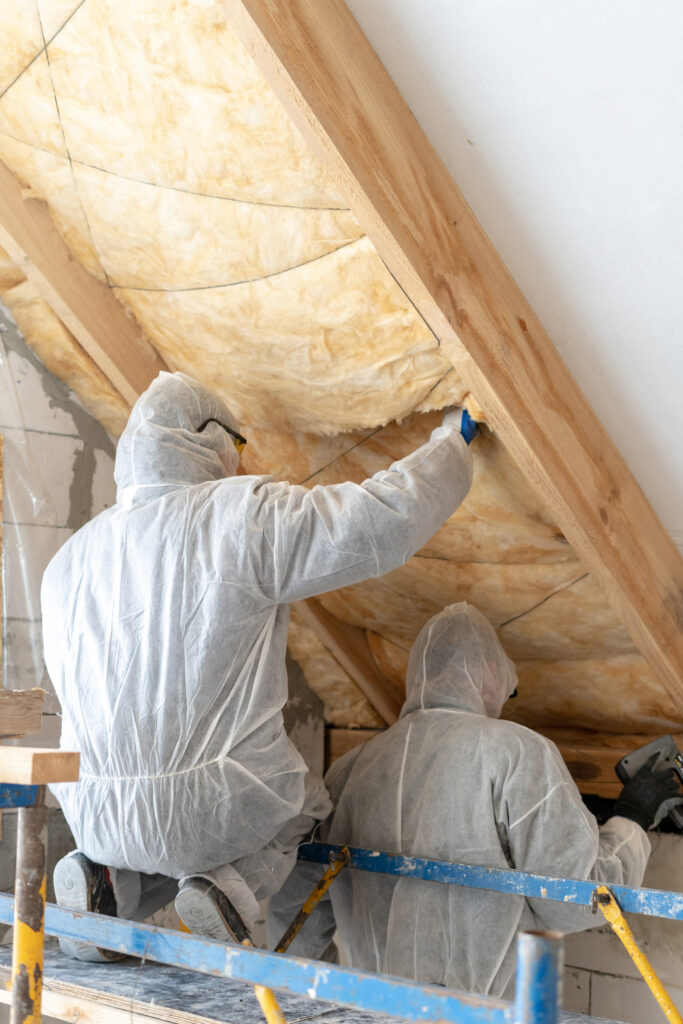
Rock Wool Batts:
Also known as mineral wool, this material is made from volcanic rock that has been melted down and spun into fibres. It’s not only great for insulating against heat transfer but also does very well in reducing sound pollution. Rock wool can also hold up well against fire, making it a great choice for fireproofing applications. Rock wool is often the most expensive form of insulation batts.
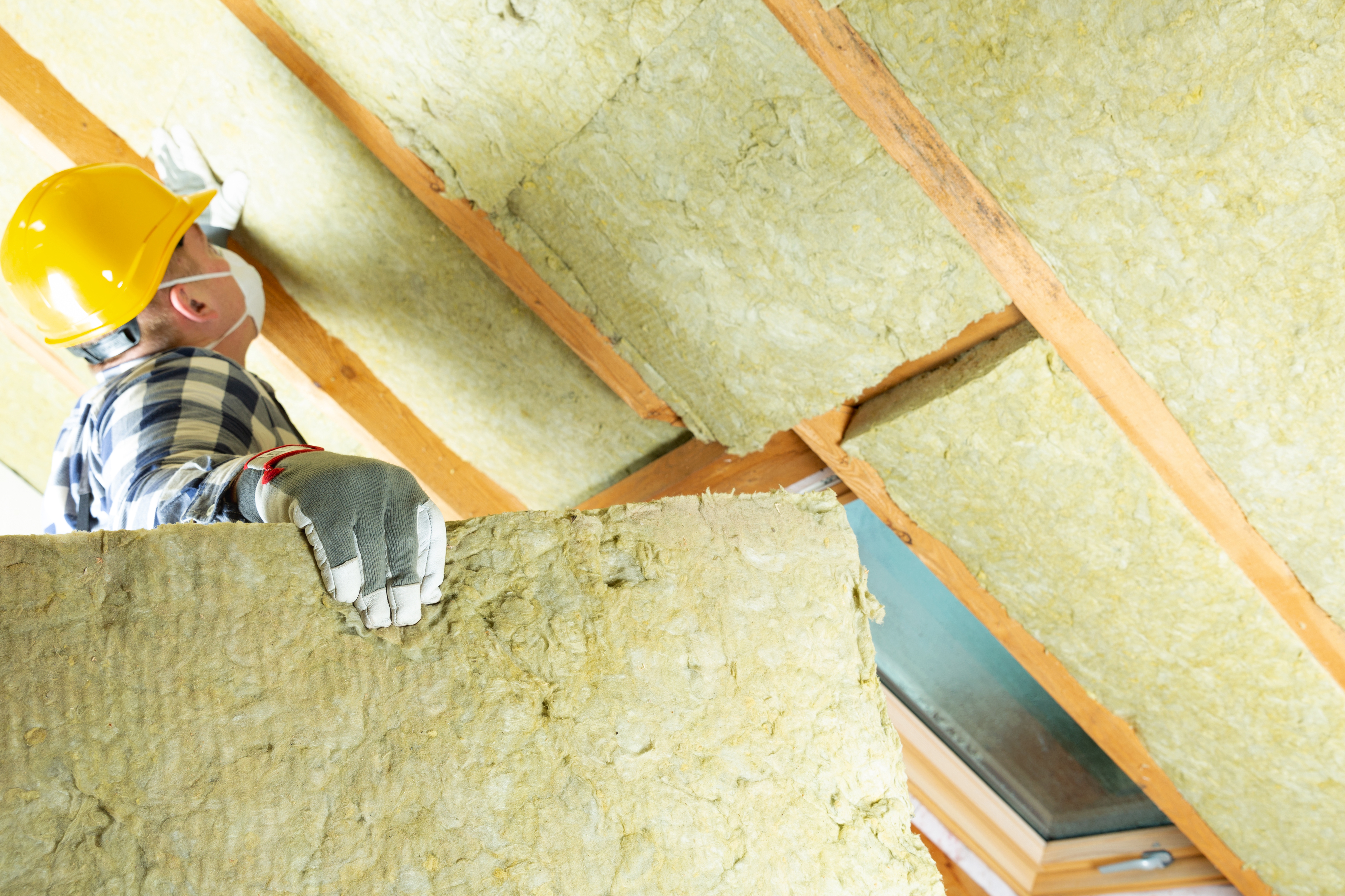
Spray Foam:
This type of insulation is sprayed onto ceilings creating an airtight seal that helps prevent air leakage. As well as its insulating power, spray foam provides a good vapour barrier which will help stop moisture build up in your home. The downside of this product is that it can be expensive and few applications require the advantages spray insulation offers. This type of insulation is not as common in domestic homes.

Blown-In insulation:
Blown-in insulation these days is usually made of cellulose fibres. That’s recycled newsprint with additives to make it pest and fire resistant. Using special equipment to pump the fibres into your roof space, these fibres cling together and fill up any gaps or cracks in your roof. This provides a nice tight effective seal with excellent thermal protection and no gaps in coverage. Blown in insulation can be the most affordable professionally installed option for ceiling insulation. One potential drawback of this process is that the resultant R-Value is dependent on how much insulation was installed and how evenly it was distributed.
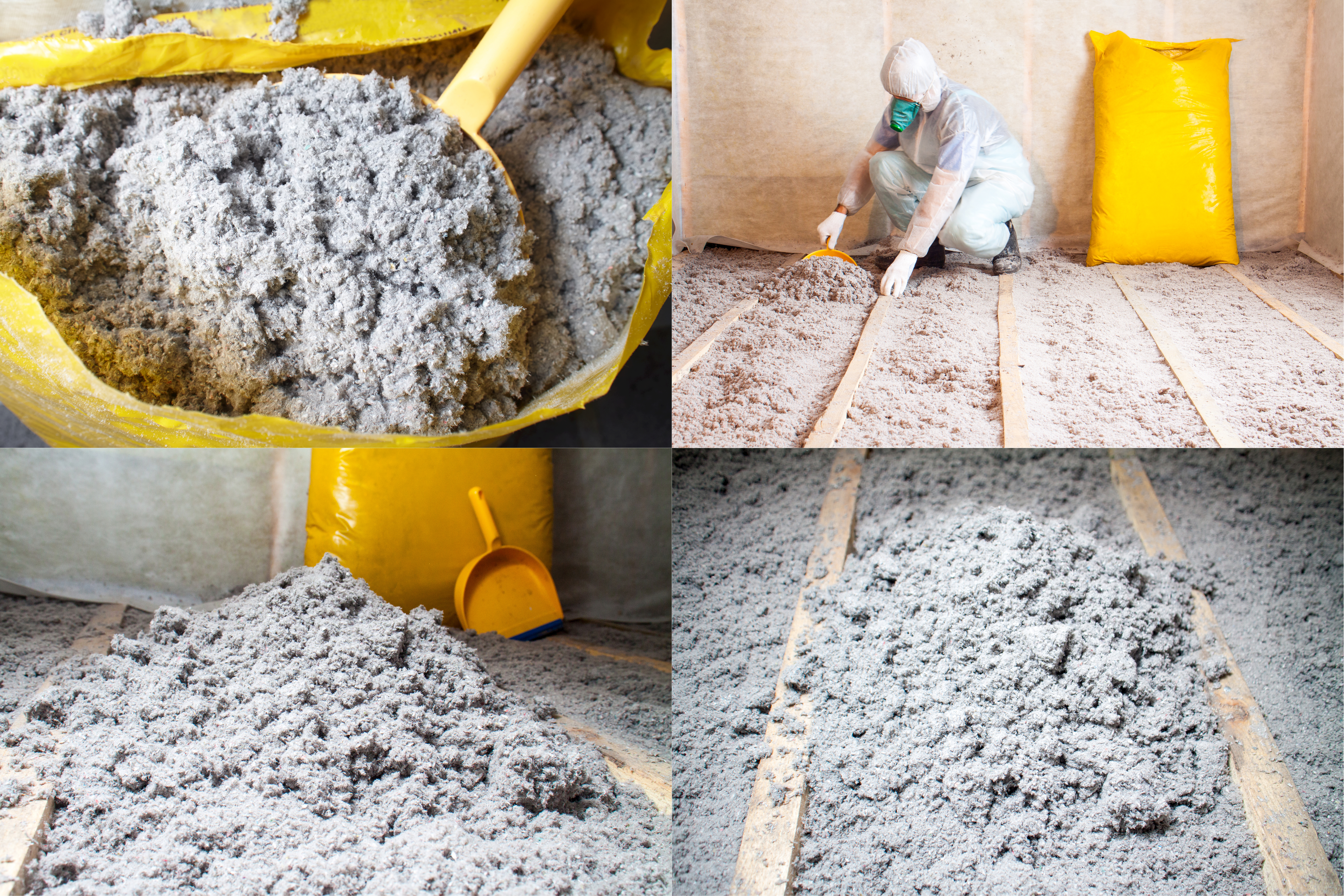
Polyester Batts:
Polyester insulation is an ideal choice for your family and environment due to its many advantageous properties. It is flame resistant, anti-irritant, non-toxic, and hydrophobic, so it won’t be negatively affected by water. It has an incredibly long lifespan because it is heat bonded, it won’t lose its thickness or insulating ability. Rats cannot pull apart heat bonded polyester like they can other materials that use glue like fibreglass and mineral wool. Additionally, polyester insulation is composed of a high percentage of recycled materials, between 40-80%, making it very sustainable to make. Whatever kind of ceiling insulation you choose, make sure to properly measure any openings or cavities before buying. If you need help and get professional advice from ecoMaster to ensure the job is done right!
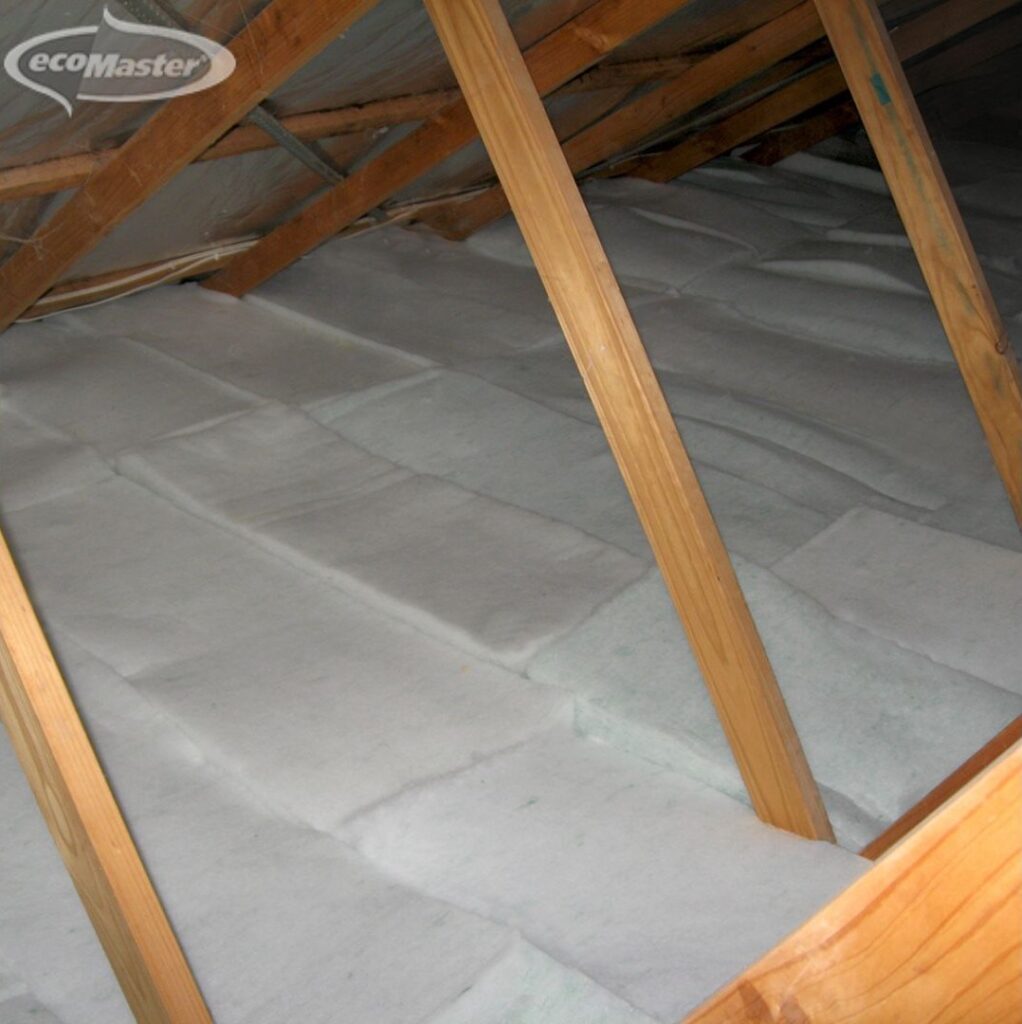
In Conclusion
No matter what kind of wall insulation you choose, it will provide thermal performance that will help keep your home comfortable in any weather. It will also help you save on energy costs, and lessen your environmental impact – all of which will have long-term benefits for your family and the climate.
People Also Ask:
⇒ Where can I learn more about this from an industry expert?
ecoMaster has been working in the energy efficiency / retrofit arena for over 20 years. During that time we learnt an enormous amount about diagnosing issues, distinctions on various products as well as developing the best installation practices. We have done the research, so you don’t have to. All that information has now been condensed into a series of ecoMasterClasses. Click here to gain access.
⇒ Does Roof Insulation Make a difference?
It may be no surprise to you that in the winter time up to 45% of the warm air in your home exits through your ceiling. Installing roof insulation in your ceiling will significantly reduce this heat loss. Roof insulation will also make a great deal of difference in the Summer keeping the cool air inside where you want it. This means that you won’t need to run the heater/cooler as much, reducing your energy bills month to month.
⇒ Where to Install roof insulation?
Roof insulation is best to be installed above all internal areas of your home.
This is because roof insulation is most effective when it covers an area that has the walls around it fully insulated. Most Australian homes have their external walls insulated, either insulated with a still air gap or bulk insulation.
However, there are other ways of insulating your home in segments. If your internal walls are insulated too, then you can do the cocooning method. Cocooning is installing ceiling insulation in critical rooms of your home where you need to have the temperature controlled. Common areas for cocooning are:
- Kids/Babies rooms
- Bathrooms
- Lounge Rooms
What’s Next?
We hope this article has helped you learn how to use simple ways to save on your utility bill. This in turn will help you on your energy and thermal efficiency retrofit journey to make your home more comfortable all year round, and reduce your costs and carbon emissions.
Next, explore Four Reasons Why Using Silicone Sealant is a Draught Proofing Mistake.
If you found this article helpful, then please subscribe to our YouTube Channel. You’ll find many more helpful “How To” videos there. You can also follow us on Facebook and Instagram to stay in the loop.For more great information on how to make your home more energy and thermally efficient subscribe NOW to ecoBites. ecoBites are free bite size chunks of the latest energy efficiency information making it quick and easy for you to absorb.

Check out ecoMaster’s range of
Polyester Roof insulation options
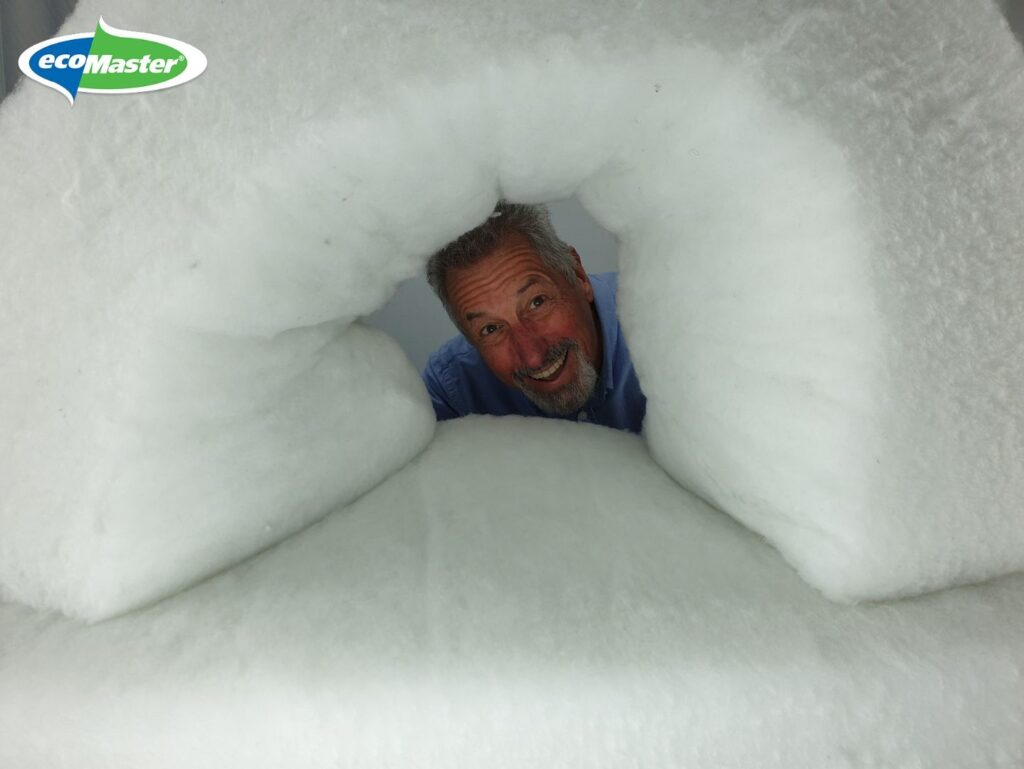
Check all options available in your area on the ecoMaster Store.
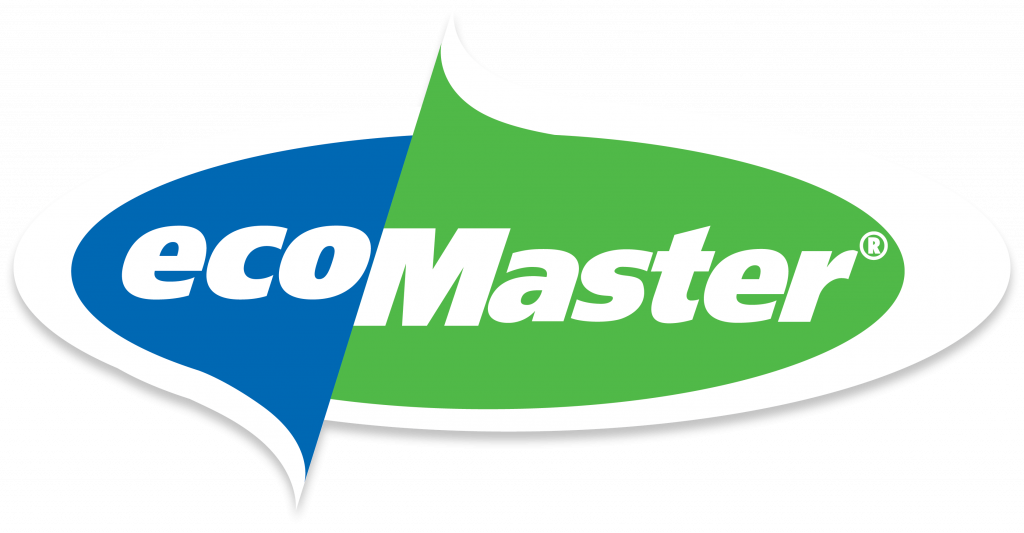

Recent Comments